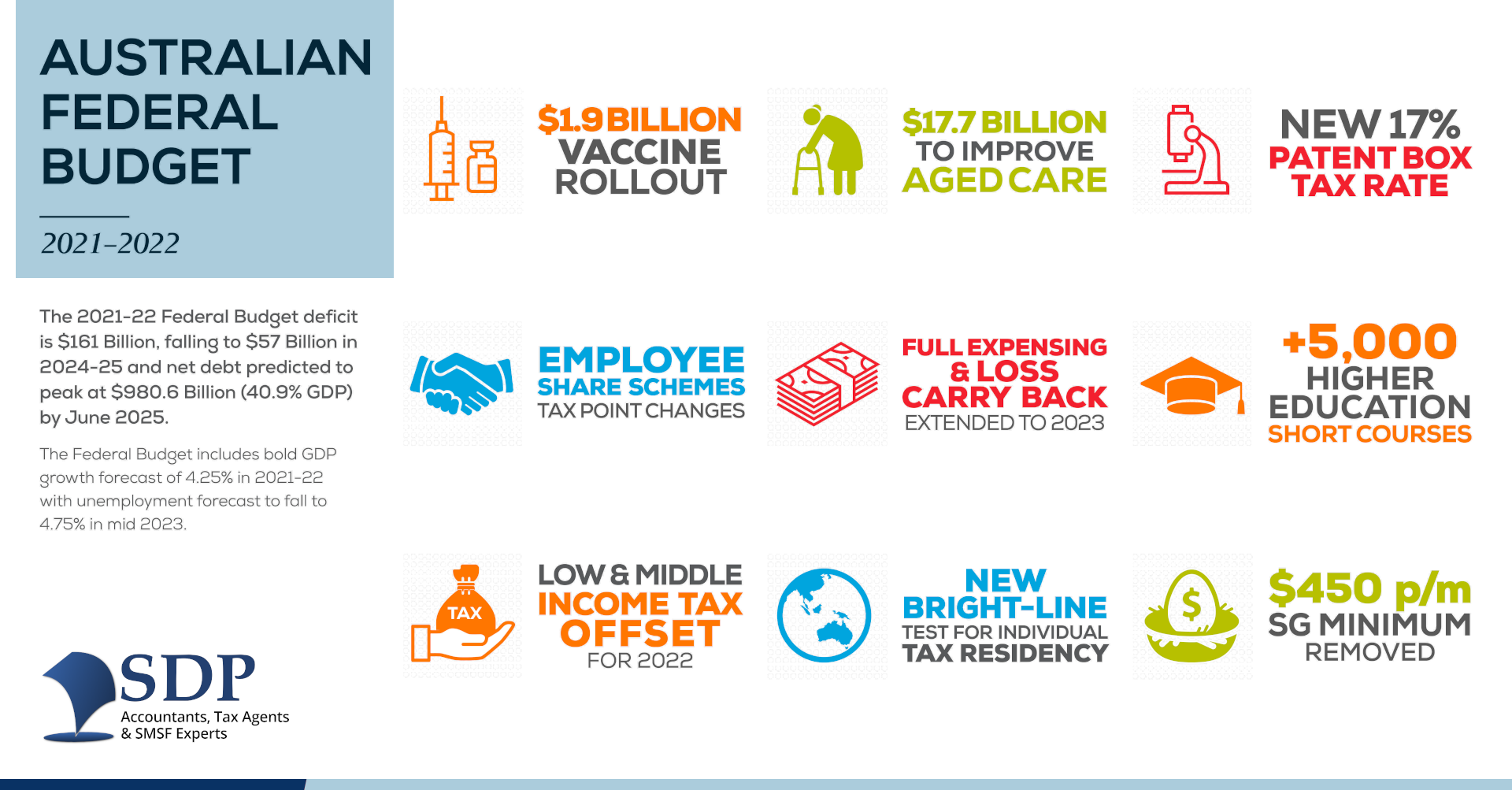Australian Federal Budget 2021-22
A plan to invest rather than reform, stimulate rather than surprise.

IN BRIEF
- Australia’s federal government has handed down a pre-election budget focused on stability and recovery
- Welcome continuation of COVID business measures aimed at stimulating economic expansion
- Spending increases will need to be underpinned by high levels of GDP growth
The Australian Federal government has handed down a budget focused on recovery and rebuilding.
In the run-up to the election cycle, the budget extends some of the business support measures designed to stimulate growth in the wake of the COVID-19 induced recession of 2020, the first to hit Australia in 30 years. As predicted, major changes to tax policy have not been considered as the government focuses on providing policy stability, although it is unclear how it will address the difficult task ahead or lay the foundation for a discussion on possible tax reform options.
The 2021-22 Federal Budget deficit is $161 billion falling to $57 billion in 2024-25 with net debt predicted to peak at $980.6 billion (40.9% GDP) by June 2025.
The Federal Budget includes a bold GDP growth forecast of 4.25% in 2021-22 with unemployment forecast to fall to 4.75% in mid-2023.
- $1.9 billion vaccine rollout
The government is investing an additional $1.9 billion in the vaccination program including funding to distribute and administer vaccines, record and monitor progress, communicate key public messages and support states and territories in the roll out
- $17.7 billion to improve aged care
The government is allocating additional funding of $17.7 billion for a comprehensive aged care reform package in response to the Royal Commission into Aged Care Quality and Safety. This will include another 80,000 new home care packages, increased time nurses and carers spend with residents, support more than 33,000 new training places for personal carers, a new indigenous workforce and additional $10 per resident per day payment to enhance the viability and sustainability of the residential aged care sector.
- Patent box with 17% tax rate for new patents
A patent box is being introduced to encourage businesses to undertake their R&D in Australia and keep patents here. The patent box will tax income derived from Australian medical and biotech patents at a 17% effective concessional corporate tax rate.
- Cessation of employment removed as tax point for Employee Share Schemes
To support Australian companies to attract and retain talent, the government is removing the cessation of employment taxing point for tax-deferred Employee Share Schemes (ESS) that are available for all companies.
- Full expensing and loss carry back extended to 2023
Temporary full expensing and temporary loss carry-back are being extended for a further year to June 2023.
- 5,000 additional higher education short courses
- Low- and middle-income tax offset extended to 2022
The low- and middle-income tax offset (LMITO) is extended for a further year to June 2022. Around 10.2 million individuals are expected to benefit from retaining the offset, worth up to $1,080 for individuals or $2,160 for dual income couples.
- New bright-line test for individual tax residency
The government will replace the individual tax residency rules with a new, easier to understand framework that provides certainty and reduces compliance costs for globally mobile individuals and their employers. The primary test will be a simple ‘bright line’ test: a person who is physically present in Australia for 183 days or more in any income year will be an Australian tax resident.
- $450 per month minimum removed for superannuation guarantee
The government is removing the $450 per month Ordinary Time Earnings threshold for the superannuation guarantee.
- Women’s budget
As expected, the Budget also included new measures to improve women’s safety, economic security, health and wellbeing with a $3.4 billion package. This includes $1.1 billion in funding for women’s safety; $1.9 billion to support women’s economic security including $1.7 billion to improve the affordability of childcare for Australian families and $351.6 million in women’s health and wellbeing measures
For more information: https://budget.gov.au/
Date posted:

